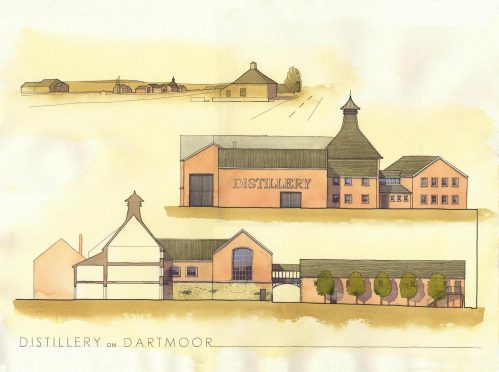Residents of an English village have objected to plans for a nearby whisky distillery – because it looks too “Scottish”.
A £4m distillery is set to be built in Princetown in Devon, which would be the largest in the UK outside Scotland.
The designs show the distillery in the Dartmoor National Park with a pagoda-style roof used throughout the industry north of the border.
But angry locals have told the architects to go back to the drawing board with the complaint: “Princetown is not Scotland”.
The design incorporates the distinctive, curved pagoda found at many Scottish distilleries including Dalwhinnie in the Highlands and Laphroaig on Islay.
The parish council covering Princetown was given an opportunity to comment on the plans at a meeting and many locals objected to the sheer Scottishness of it.
Alison Green complained: “The pagoda, whilst typical to Scottish distilleries, is not typical here and inappropriate to a building in Princetown or anywhere on Dartmoor.”
Another person wrote a letter of objection, stating: “Even the architect for the distillery said the design of the high tower and general appearance of the property is purely cosmetic and in keeping to a Scottish distillery.
“Well Princetown is not Scotland and the looks are not in keeping to the local area. I fear further growth, once the initial distillery is built, which would impact further turning Dartmoor into an industrial area.”
However, despite the outcry, the parish council approved the scheme.
Gareth Roberts, Director of Organic Architects, who submitted the plan, said: “There is a character of distilleries and we came to the conclusion a traditional whisky distillery was best – we wanted to make it look pretty and not like a warehouse.
“The square plan is topped by an iconic pagoda roof which forms a new landmark feature. This style of roof forms originally vented malting kilns and has come to typify distilleries around the world.”
Once operational, the Dartmoor facility will be capable of producing around 400,000 litres of pure alcohol per year, but Graeme Bowie, Distillery Manager at Tomintoul-Glenlivet in Ballindalloch, said the creation of a major distillery outside Scotland was something to be welcomed.
He added: “It’s a good thing to have new distilleries, but it will never compete with the Scotch whisky industry.
“The Scotch industry has been around for 250 years.”
